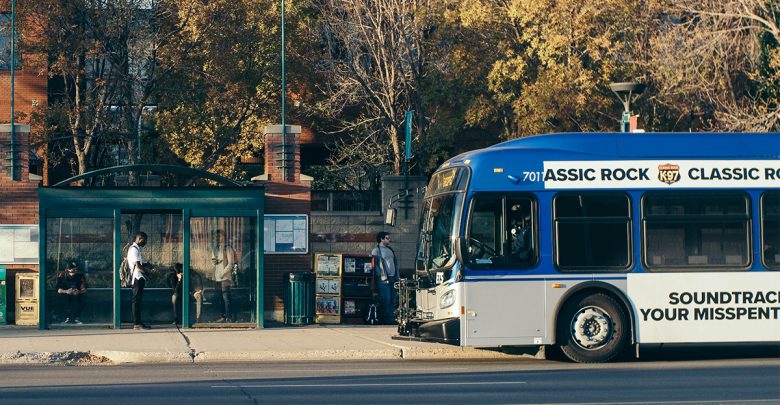Driver shortage causes Edmonton Transit Service to reduce weekday bus trips by two per cent
With a rise in cases attributed to the COVID-19 Omicron variant, there are too many shifts — and not enough people to cover them.
 Nana Andoh
Nana AndohDriver shortages caused by the COVID-19 pandemic have forced Edmonton Transit Service (ETS) to reduce 330 weekday bus trips. With a rise in cases attributed to the COVID-19 Omicron variant, there are too many shifts — and not enough people to cover them.
Overall, the cuts make up two per cent of all weekday ETS bus routes; weekend schedules, both LRT lines, On Demand Transit services, Dedicated Accessible Transit Services, and all regional services are still available.
According to Olena Babiy, communications advisor for the City of Edmonton, the city is dedicated to maintaining transit accessibility for all Edmontonians.
“We know how important it is for Edmontonians to have access to the places they live, work, and play, so we’re doing our best to keep transit running,” she said.
In order to maintain transit accessibility, Babiy says that ETS follows a set of principles which minimize the impact these cuts have on riders. For example, school special services, which only run on instructional days and transport K-12 students to and from school, are less likely to be affected.
As well, changes to service frequencies occur proportionately across the city, so that some areas aren’t impacted disproportionately. Lastly, a priority for ETS is to minimize overcrowding on buses. During peak hours, service frequencies shouldn’t fall below 30 minutes on any of the city’s routes whenever possible. However, during off hours, service frequencies can be reduced to as much as 60 minutes.
Babiy says that ETS will be adjusting routes as needed to accommodate any more driver shortages.
“ETS has several mitigation measures in place to increase workforce availability, including increasing new operator training,” Babiy said.
The number of driver absences reflects those of the larger Edmonton community, which is riddled with high Omicron numbers.
Despite the efforts to keep transit accessible, it may not be enough. According to Stephen Raitz, the chair of Paths for People, a lot more needs to be done in order to increase transportation accessibility to Edmontonians.
Raitz is a first year law student at the U of A with an undergraduate degree in urban planning. After graduating in 2019, he worked for a while as an urban planner before applying to law school.
“I got to work on transit-related projects and understood the policy side of things, but also I have the experience side of things too of being a student and transiting to school,” Raitz said.
Paths for People is a non-profit organization that aims to increase accessibility to all forms of transit, as well as make Edmonton safe and livable. For Raitz, making Edmonton more accessible means allowing people to commute safely, whether they’re walking down the street or taking the bus.
“A huge component of that is a lot of people who choose to walk, bike, or roll are connecting to transit,” says Raitz.
When restructuring began, Paths for People was very involved in order to make sure that people stayed connected.
“Our goal is to make sure that those connections are strong so that people can make multi-modal trips where they walk or roll to the bus, and then are able to connect with the rest of the city,” Raitz said. “We didn’t necessarily cut transit funding, but we shifted the system. We cut some routes, and prioritized some. High priority corridors have better frequency now, creating a more reliable transportation choice in the core.”
While wait times may be higher in the outer sections of the city, Paths for People wanted to ensure that the most utilized areas, such as Downtown or the University, remained connected.
“Out in the suburbs, those were cut and suddenly you are waiting half an hour or 60 minutes for a bus,” he said. To him, the City of Edmonton and Paths for People took two steps forward and one step back. The core of the city is now more connected which facilitates accessibility, but now the outer corners are left out.
Increasing accessibility to transit isn’t just creating more routes, but allowing for diversity in transportation.
“The key action, outside of the transit system, that we need to take is improving our sidewalk system,” Raitz said. “Transit isn’t just the bus, but walking and rolling to the bus.”
“If you provide people with safe, comfortable, accessible transportation options that are going to meet people’s needs that aren’t currently satiated right now, they can get around easier and be a part of their community.”
Even though many strides have been made to increase accessibility to transit in Edmonton, Raitz described it as still inaccessible.
“Right now, it is inaccessible because it doesn’t work for everybody. I want to stress we’re getting there, but we’re getting to the point of accessibility for everybody. We’re not there yet. It’s not what they need, not what they deserve, but it’s moving in the right direction,” says Raitz.




